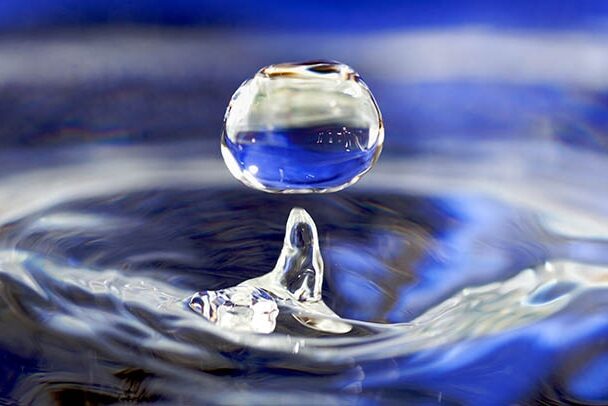While floods (and snow) continue to ravage our state, it may seem like an odd time to talk about conserving water. People can’t wait for the waters to recede and rebuilding to begin, but water systems are being compromised and our friends and family don’t have potable water to drink.
Every drop of water that is wasted is water that could be used to help or conserved to lighten the load on already strained systems. This is true all of the time, but more important now than ever.
LiveGreen is asking for your help conserving water with our spring campaign: Every Drop Counts. As you may know, the med center has set an ambitious goal to achieve a neutral water footprint by 2030. That means using the same amount of water (or less) than the annual amount that falls on campus as rain and snow. To achieve this goal, the med center needs to reduce water use to 104 million gallons per year. Currently, we use about 188 million gallons per year. That sounds like a big reduction, but we’ve already made great strides with a 17 percent reduction from our 2010 baseline of 225 million gallons — and we did that while adding new buildings.
While our water goal was based on being good stewards, as clean water is critical for good health, this campaign is especially timely given the fact that MUD recently announced it will be increasing rates 19 percent for commercial water use and 7 percent for all residential customers. Conserving water allows us to put resources to better things and saves money.
From now to April 30, we are asking you to think of ways you can conserve water at work, communicate your actions and ideas to conserve water with your peers, and then use all that apply to conserve water. Please share them with LiveGreen so we can add them to our site to further spread the word. Even if you think your idea is “old news” or common knowledge, share it! The more people who conserve water, the bigger the effect, and the better for everyone. While conserving water is important, we will never compromise handwashing technique or other infection control practices.
Need some ideas to get started? Check out our Every Drop Counts page and/or get more info on our goal on the LiveGreen water page.

I hope the University is considering replacing all current lawn with the buffalo grass like what once covered the space that the Lozier Center for Pharmacy Sciences now occupies. It does not need irrigation and being of short stature fuel is saved as it requires very little mowing. Root depth can be up to 10 feet! Native prairie plantings requiring no irrigation would also be fitting at the new space to occupy the intersection of 42nd & Leavenworth. I don't know if this link would be allowed in a comment, but it illustrates the differences in roots of native vs non-native plants. https://cfpub.epa.gov/npstbx/files/KSMO_KnowYourRoots.pdf
I hope the University is considering replacing all current lawn with the buffalo grass like what once covered the space that the Lozier Center for Pharmacy Sciences now occupies. It does not need irrigation and being of short stature fuel is saved as it requires very little mowing. Root depth can be up to 10 feet! Native prairie plantings requiring no irrigation would also be fitting at the new space to occupy the intersection of 42nd & Leavenworth. I don't know if this link would be allowed in a comment, but it illustrates the differences in roots of native vs non-native plants. https://cfpub.epa.gov/npstbx/files/KSMO_KnowYourRoots.pdf
Hi Virgie,
Isn't the root depth of native plants amazing?!? I know there were some issues with the buffalo grass, but it–and other native and drought tolerant plants, are things we continue to look at. Grounds has done a great job of monitoring our irrigation so things aren't over-watered and broken or mis-aimed heads are fixed ASAP. As such irrigation is down to less than 6% of our overall water use, which is great, given that we still have good, usable green spaces.
I'm not sure what the plan for 42nd and Leavenworth is, but I will ask!
Thanks,
Melanie